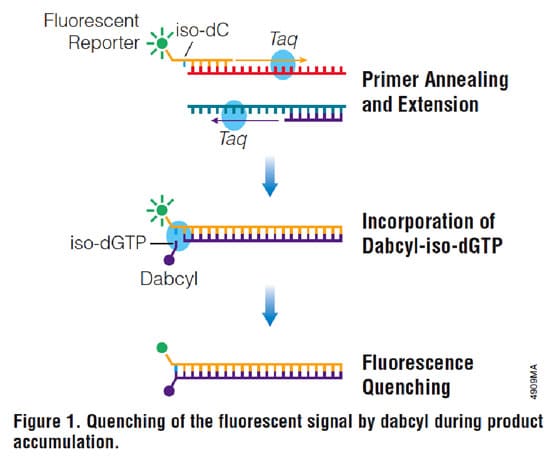For applications such as site-directed mutagenesis, it is often recommended that you use a proofreading polymerase (also known as high-fidelity polymerases) to minimize the risk of introducing unintended point mutations. But what is a proofreading polymerase? What makes them different from other polymerases? And when should you use them? Read on to learn more…
What is a proofreading polymerase?
A proofreading polymerase is an enzyme that replicates DNA with a higher degree of fidelity than standard Taq. No polymerase is infallible: at some point, the polymerase will add an incorrect nucleotide onto the growing DNA chain, resulting in a mismatch between the template and the newly synthesize strand. Standard (non-proofreading) polymerases like Taq have an error rate of around one incorrect nucleotide per every 105 nucleotides synthesize, whereas proofreading polymerase such as Pfu have an error rate of about one nucleotide per 106 or less – an order of magnitude better. Error rates of proofreading polymerases are often expressed in comparison to Taq (i.e. 50x the fidelity of Taq).
How does it work?
The proofreading function of a polymerase lies in its 3’ to 5’ exonuclease activity. Since polymerases synthesize DNA in a 5’ to 3’ direction, this exonuclease activity works in the reverse direction, snipping out an incorrect nucleotide immediately after it’s been inserted. Not all polymerases have exonuclease activity, which is why they have a higher error rate: they have no way of correcting mistakes. This 3’ to 5’ exonuclease activity is also responsible for trimming the overhanging “A” off the end of a newly synthesized DNA fragment, which is why proofreading enzymes are not suitable for amplifying products to be used in TA cloning applications.
When should I use them?
Proofreading enzymes are crucial for applications such as mutagenesis, when it’s important to know the exact sequence of your PCR product. However, since proofreading enzymes tend to be more expensive than standard enzymes like Taq, it’s a good idea to only use them when you need that extra degree of accuracy. For applications like colony screening, when you really only need to look for the presence or absence of a PCR product, go ahead and use a non-proofreading enzyme and save yourself a little grant money. Another trick you can use is “spiking” your Taq supply with Pfu or another high-fidelity enzyme: adding a few microliters of Pfu to a tube of Taq introduces enough exonuclease activity to bump up the fidelity of Taq-generated products, without blowing through a whole tube of Pfu.
For more information, check out the following resources:
When do you use proofreading enzymes in your research?







